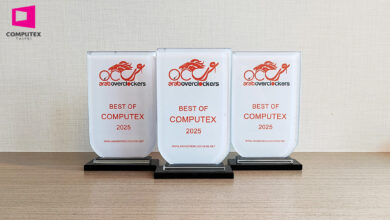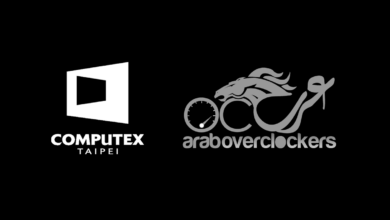Anyone following the trajectory of technology and entrepreneurship worldwide would notice a dramatic acceleration in the rise of platforms that bring startups together and open doors for international expansion. Among the most prominent of these platforms is InnoVEX, the startup focused exhibition held as part of COMPUTEX Taipei. Over the years, InnoVEX has evolved into a global hub that connects entrepreneurs, investors, and innovation enablers. It is no longer just a showcase for products or ideas; it has become a meeting point that shapes the future of technology by highlighting cutting-edge solutions and fostering cross-border partnerships.
Since its launch a decade ago, InnoVEX has secured a reputation as one of the most influential events attracting startups across diverse fields from artificial intelligence and fintech to robotics and the Internet of Things. The 2025 edition brought together more than 450 startups from 24 countries and regions, with strong representation from national pavilions organized by governments and global institutions. Yet amid this global momentum, the absence of Arab and Middle Eastern startups was striking, raising critical questions about why they are missing, what the region loses by staying away, and why their presence is vital.
Reading the Regional Investment Landscape
Reports from MAGNiTT and Wamda indicate that startups across MENA raised approximately $2.1 billion across 334 deals in the first half of 2025, marking a sharp 134% increase compared to the same period in 2024. This surge reflects growing confidence in the region’s entrepreneurial ecosystem, further bolstered by government programs like Saudi Arabia’s Vision 2030 and digital economy initiatives in the UAE and Egypt.
But the numbers reveal deeper nuances. Debt financing accounted for nearly $930 million almost half of the total raising concerns about whether this growth is sustainable and innovation-driven, or if it is fueled by short-term liquidity injections. Saudi Arabia dominated the scene, securing around $860 million, more than half of all regional funding. Meanwhile, fintech alone attracted nearly $969 million, highlighting a heavy concentration in a single sector rather than broad-based innovation.
The Global Picture: Where Asia Stands vs. the Middle East
By comparison, Asia remains on a different scale. KPMG reports show venture capital investment in Asia reaching $12.8 billion in Q2 2025, one of its lowest levels in recent years, yet still many times larger than MENA’s totals. The Americas, for perspective, attracted over $70 billion in the same quarter.
Southeast Asia provides an especially relevant benchmark. In 2024, the region raised $5.6 billion across 564 deals, more than double the size of the entire MENA market despite facing similar demographic and technological conditions. What makes the difference? A greater willingness to plug into global platforms such as InnoVEX, enabling startups to scale internationally and secure global capital.
Why Middle Eastern Startups Should Be at InnoVEX
The absence of MENA startups from InnoVEX is not just a missed marketing opportunity, it represents a strategic loss across multiple dimensions:
- Access to global capital: Local funding alone is insufficient for scaling globally. InnoVEX connects startups with international investors who provide not just money, but strategic support for global expansion.
- Integration into manufacturing chains: Asia is home to the world’s leading electronics and advanced technology supply chains. Being at InnoVEX provides startups with direct links to these ecosystems.
- Influence on tech trends: InnoVEX is where future technology roadmaps are shaped. Absence means the region’s voice is not part of this process.
- Building regional visibility: Collective participation through national or regional pavilions projects the Middle East as an emerging hub for innovation.
- Diversification of partnerships: Exposure to Asian investors and industrial players can unlock opportunities unavailable in local markets.
- Export potential: SaaS platforms, AI solutions, cybersecurity, and data analytics can all find new markets in Southeast Asia, Japan, and Korea.
- Credibility on the global stage: International presence enhances startup reputation, attracting long-term trust from partners and customers.
- Learning from global leaders: Exposure to advanced industrial practices helps improve competitiveness and product quality.
- Research and academic ties: InnoVEX hosts universities and research institutions that could become partners for joint R&D projects.
In short, participation is not a short-term cost, it’s a long-term investment.
Explaining the Absence
Several challenges help explain the weak Middle Eastern presence:
- Limited government-backed support mechanisms for international participation.
- A focus on regional events like GITEX or Step Conference, at the expense of global exposure.
- Heavy reliance on debt financing, which offers liquidity but not necessarily strategic growth.
- Over-concentration in fintech, reducing the diversity global investors look for.
- Administrative and logistical hurdles such as visas and high travel costs.
Closing the Gap: Toward a Regional Strategy
To bridge this gap, a collective vision is required:
- Accelerators and incubators should prepare startups to adapt their products for Asian markets.
- Venture funds should see international participation as a pathway to higher returns.
- Startups themselves must view InnoVEX attendance as an investment, not an expense.
Concrete steps could include:
- Government-backed programs to subsidize participation costs.
- Regional collaboration between Gulf states, Egypt, and Jordan to build a unified pavilion.
- Entrepreneur training on engaging global investors.
- Sectoral diversification beyond fintech into healthtech, agritech, and industrial AI.
- Formal partnerships with InnoVEX organizers to guarantee an annual Middle Eastern presence.
The Risks of Continued Absence
If Middle Eastern startups continue to miss out, the consequences are significant:
- Eroding competitiveness: Companies risk falling behind technologically by not engaging with Asian supply chains.
- Missed funding opportunities: Global investors aligned with Asian value chains may overlook isolated startups.
- Innovation isolation: Without exposure to global research networks, the region risks slower adoption of best practices.
Conclusion: From Local Growth to Global Impact
The absence of Middle Eastern startups from InnoVEX is more than an organizational detail, it reflects a strategic gap between local momentum and global presence. While billions of dollars flow into the region’s startup ecosystem, much of this capital remains locally confined, failing to translate into global success stories that shape international value chains.
Without active participation, the region’s innovations risk going unheard in global circles, while competitors in Asia and the Americas seize the opportunity. Yet the timing is ideal for change. With Asia experiencing a relative slowdown and new sectors such as industrial AI, clean energy, and robotics on the rise, the Middle East has a chance to insert itself into the global conversation.
Attending InnoVEX is not a luxury or a branding exercise, it is a strategic necessity dictated by numbers and by the competitive realities of the innovation economy. The real question is whether Middle Eastern startups will remain locally ambitious or rise to become true players on the global stage.



